Navigation lessons with the Nature Reliance School are not lost on students.
Over the course of the years in which I’ve engaged in survival training, one of my most daunting subjects has always been land navigation.
Reading maps, using a compass and applying those skills in the field always felt like equal parts advanced mathematics and witchcraft. I read many books and articles and typically came away just as confused as when I started. Latitude, declination, degrees, bearings; it always made my head spin. Hands-on teaching helped to demystify some of this, but never to the point at which I was comfortable with the subject.
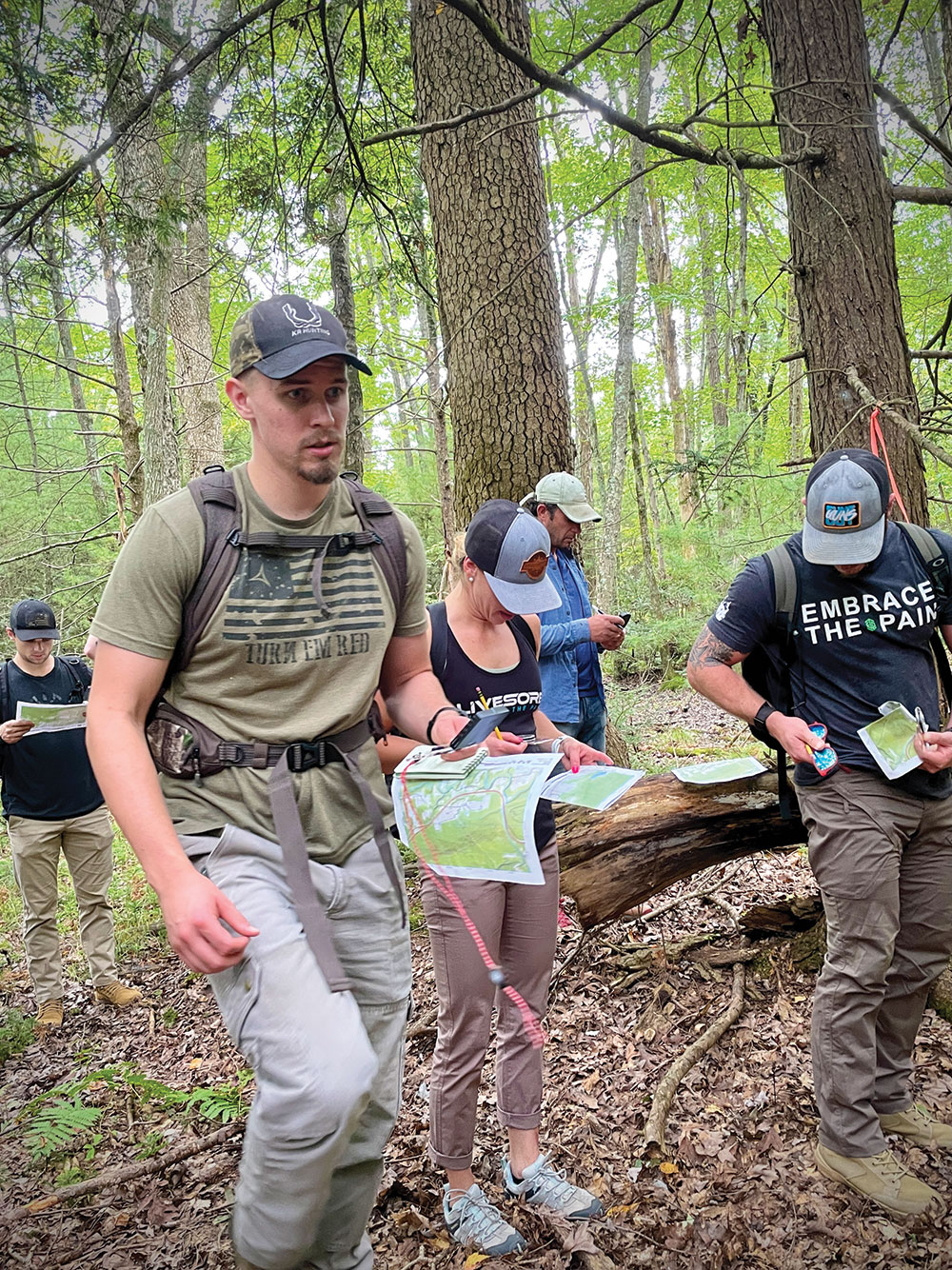
Much to my shame, land navigation remained a weakness in my skill set for a very long time. But, having spoken with many students of survival over the years, I’ve found that I’m not alone in this deficiency.
All this changed with my discovery of a book called Essential Wilderness Navigation by Craig Caudill and Tracy Trimbal. I was familiar with Caudill from his other books, Extreme Wilderness Survival and Ultimate Wilderness Gear, as well as his YouTube channel, “Nature Reliance.”
Caudill writes in a way that’s logical and easy for me to understand, so I decided to have another go at learning land navigation. This time, however, I decided it was time to go back to school—Caudill’s Nature Reliance School (NatureReliance.org), to be exact.
INTRO TO LAND NAVIGATION
I joined Caudill’s recent, one-day “Introduction to Land Navigation” class at the Red Rock Lodge. It’s located on 4,000 acres near Sugarloaf, Pennsylvania, and draws students from Ohio, New York, New Jersey and Pennsylvania.
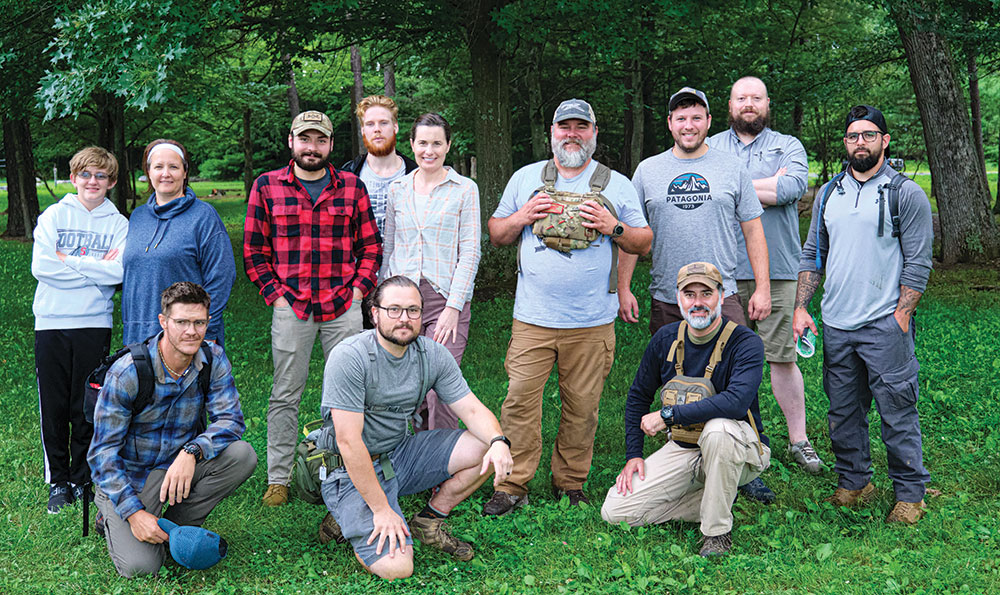
The class started with the Pledge of Allegiance and a round of introductions. Caudill then laid out what the students could expect from the class, along with a general outline of how the day would proceed. He then discussed his book, Essential Wilderness Navigation, and how the day’s instruction would complement the information in the book.
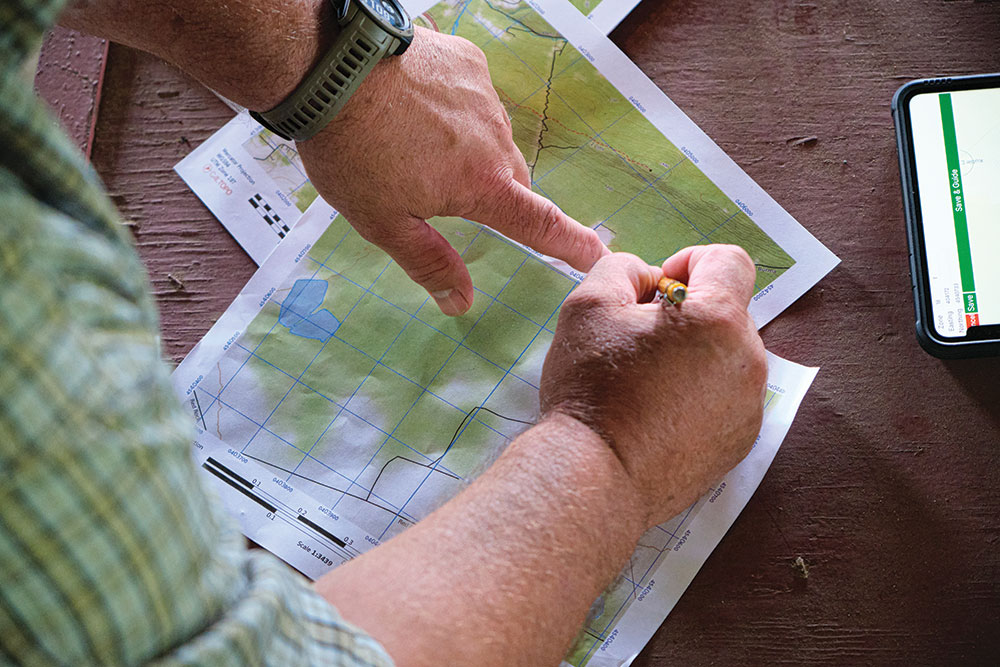
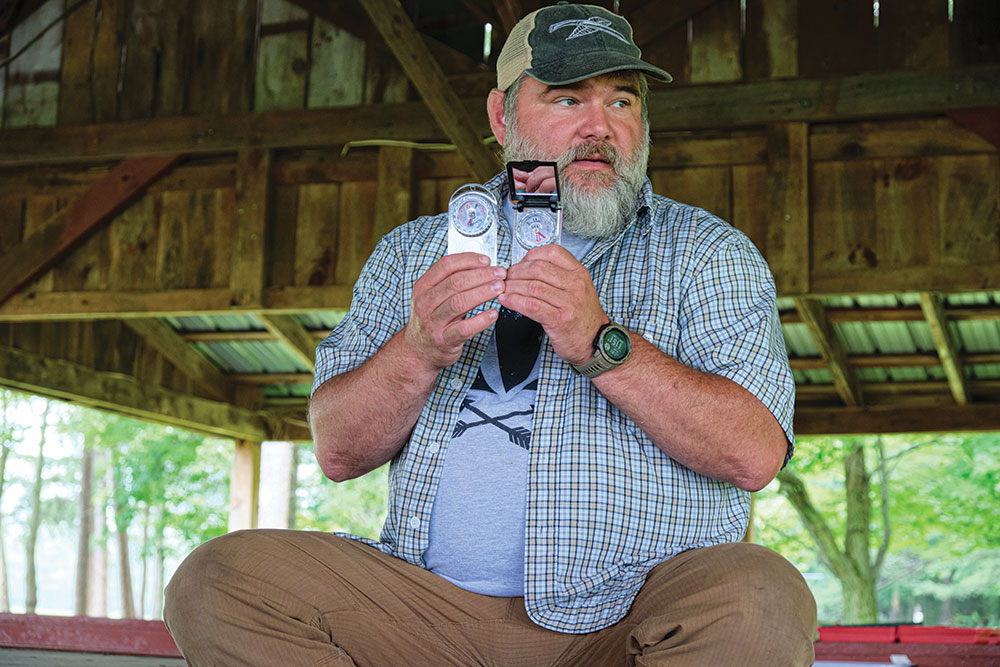
The first order of business was to discuss the three components of navigation:
- Map. Maps are the key to successful land navigation. A quality map and the ability to read it comprise the most important tools/skill set combination you can possess. Using a map with basic terrain association skills might not be as precise as using a map with a compass, but it can definitely keep you from getting lost.
- Compass. Second to a quality map is a quality compass. Caudill first discussed what to look for in a compass. He only recommends compasses from Cammenga, Suunto and Brunton because of the consistent quality controls in their manufacturing processes (his recommendation for other brands was to immediately throw them in the trash). Caudill then discussed the strengths and weaknesses of baseplate and lensatic compasses and informed us that we would learn to use basic baseplate compasses for the duration of the course.
- GPS. Caudill briefly discussed stand-alone GPS units from companies such as Garmin but pointed out that he hasn’t used them for the past few years. He specifically recommended the Gaia and CalTopo cell phone apps, coupled with a quality cell phone, as his preferred replacement for a dedicated GPS unit. While both apps were recommended for their stand-alone features, CalTopo was singled out as the preferred platform due to its full-featured desktop computer interface and the ability to print your own custom maps.
Students were then led through a discussion of different types of maps, with an emphasis on the strengths and weaknesses of each type. Caudill spent the bulk of his time reviewing USGS (U.S. Geological Survey) topographical maps, which he considers to be the “gold standard” of mapping systems. Students each received several USGS maps and were given a detailed breakdown of how to read them.
“Reading maps, using a compass and applying those skills in the field always felt like equal parts advanced mathematics and witchcraft.”
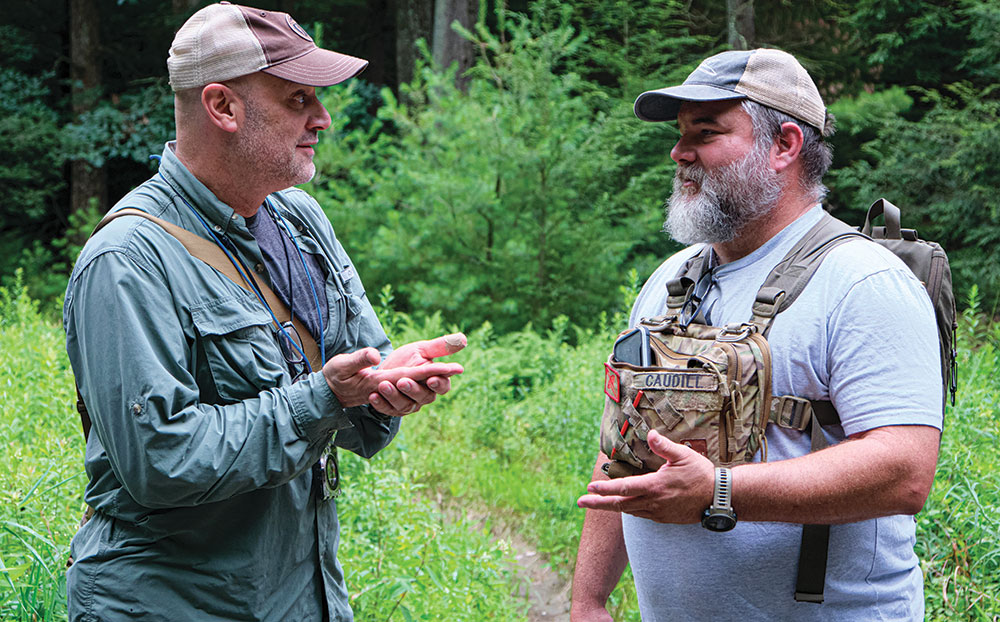
A good portion of class time was spent on map-reading. Students learned how to read the map legend, map scale and what datum sets were being used, as well as why that was important. Contour lines, distance estimation, and how to read and use the UTM (Universal Transverse Mercator) grid system received the bulk of the class’s focus.
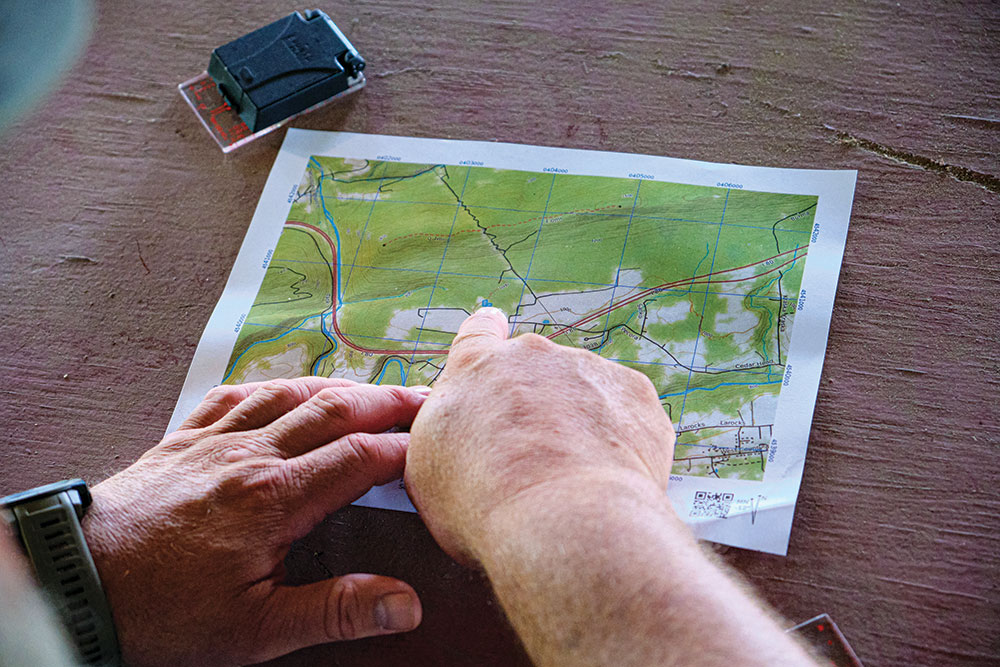
In the beginning, students had a lot of questions—and confusion—regarding the use of the UTM system, which is a metric-based grid system that can plot precise locations on a map.
Nevertheless, by the end of this interactive presentation, we were all finding precise locations on our maps, plotting courses and relaying coordinates with ease.
PRACTICAL APPLICATIONS
Finally, it was time to put all this new information into practice. Caudill made sure each student had a functional, approved compass, a map of the area and the supplies needed to spend the rest of the day in the field.
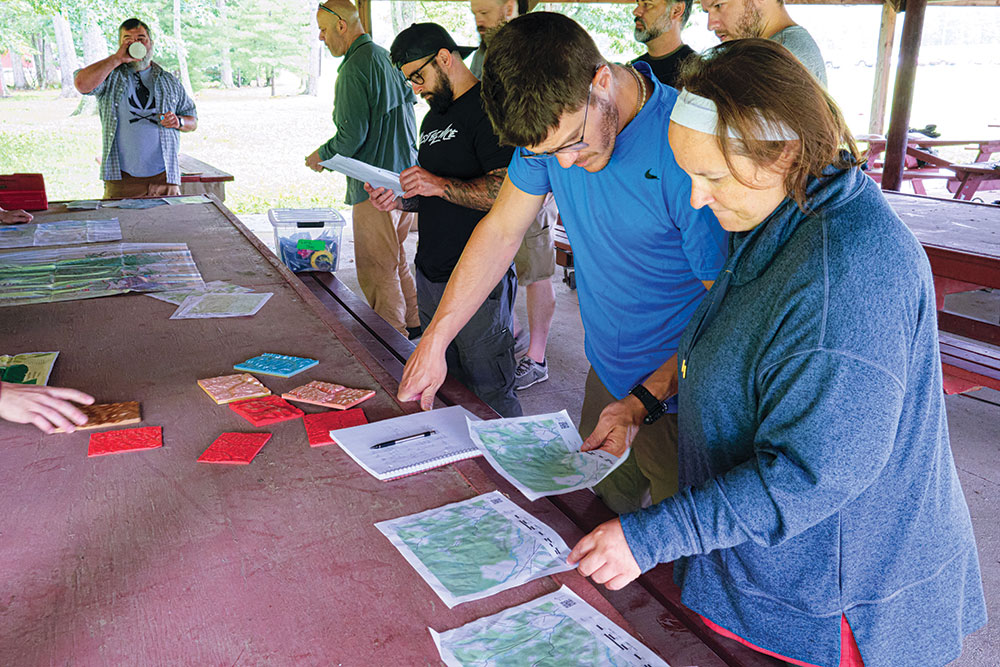
The first order of business was to determine students’ pace counts. “Pace count” is the number of steps it takes for a person to cover 100 meters. Pace counts are unique to each person and comprise a useful tool when a GPS isn’t available. When used along with a good map, compass and terrain association, it’s possible to get a fairly accurate fix on your exact location without a GPS.
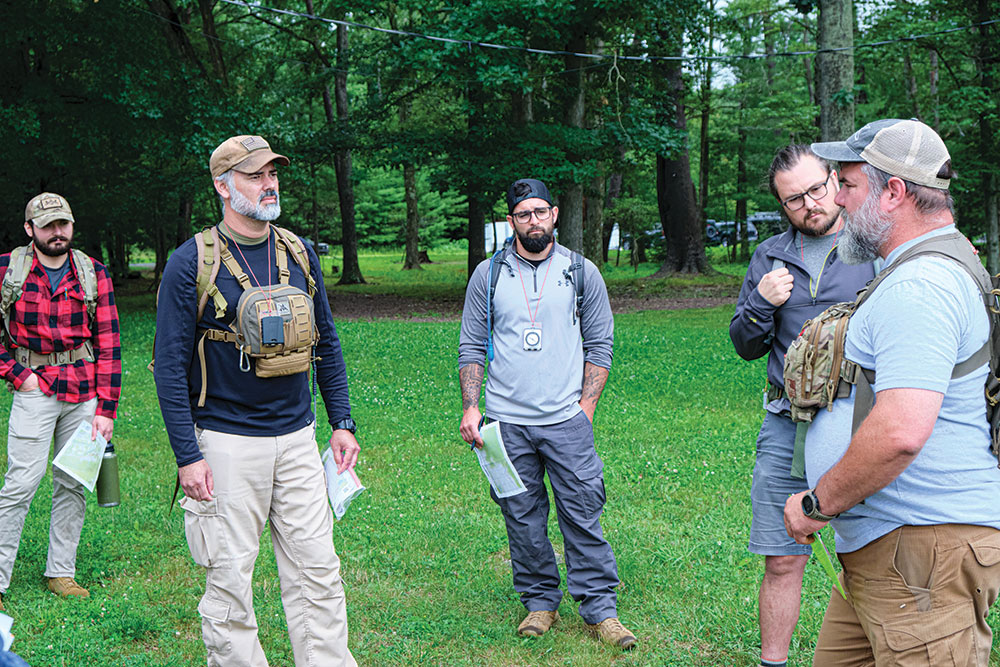
Students spent the rest of the time in the field using their compasses to take bearings, plot their locations on maps and learn techniques to work in pairs and circumnavigate obstacles.
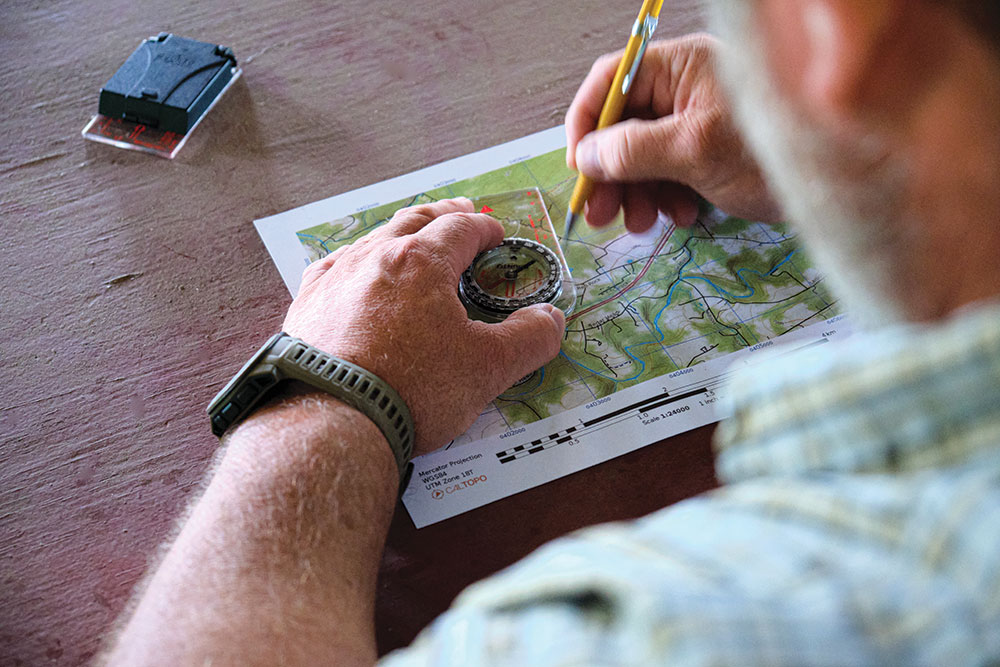
I partnered with a good friend to conduct the field exercises. The terrain we were training in was dense Eastern woodland forest. Heavy tree cover and undergrowth made it challenging to maintain a course. However, Caudill taught us a technique called “leapfrogging” that made this challenge much easier.
“Whether you’re a highly accomplished woodsman, or your level of experience ends with mere curiosity about a topic, the Nature Reliance School has something to offer you.”
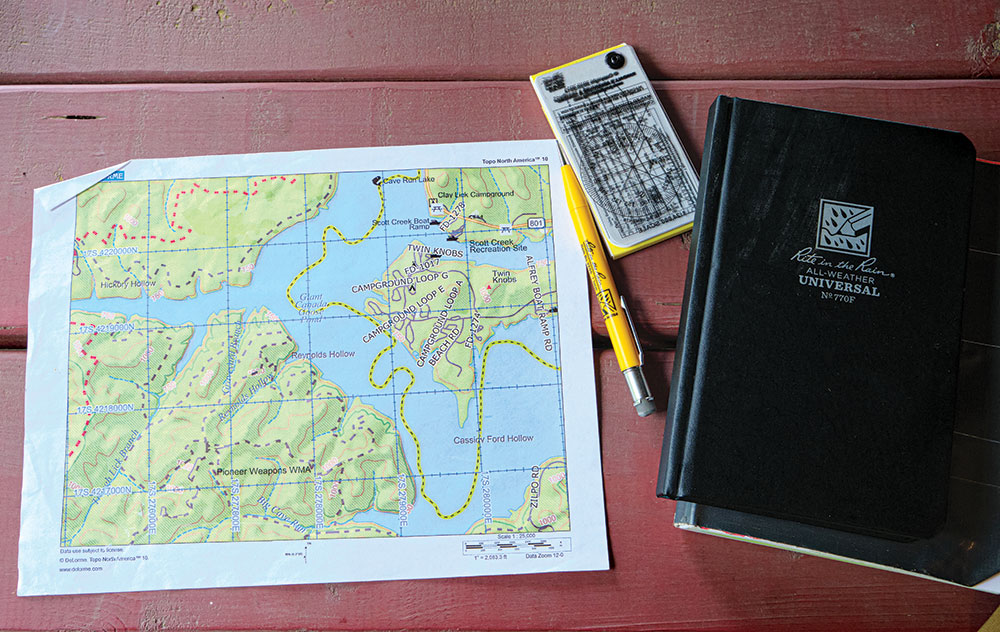
Working in teams, one person would take a bearing and find a spot in the distance that corresponded with their direction of travel. They’d stay stationary and keep their partner heading in the right direction. The person doing the walking kept their pace count, compensating for any obstacles that had to be overcome, to keep track of the distance traveled.
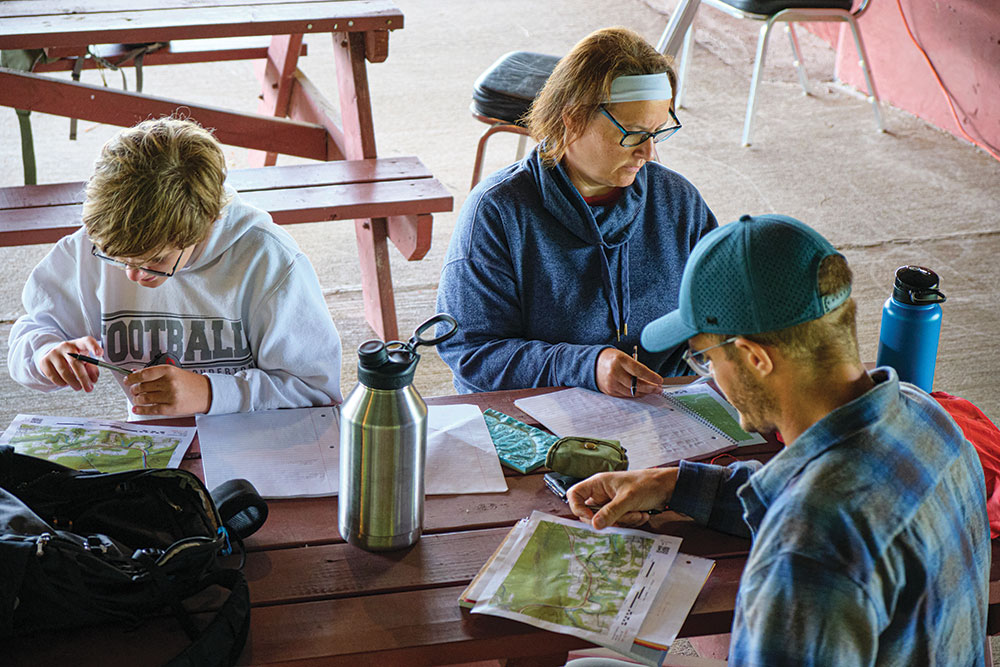
When the walker reached his objective, the direction-finder would move up to meet him and start the process over again. This technique allowed us to stay on course, take accurate distance measurements and navigate through dense, low-visibility terrain with relative ease.
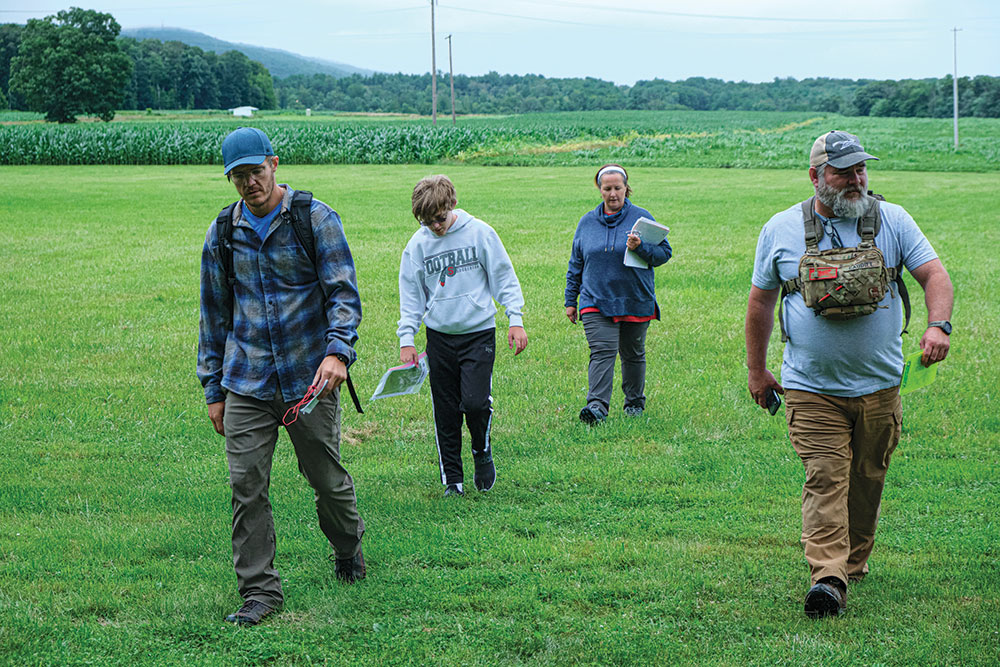
Throughout the field exercises, Caudill remained close at hand to answer questions, make corrections and give guidance when needed. Despite the class comprising a mix of experience levels—from none at all to experienced navigators—his teaching style ensured everyone stayed together and learned … while having a good time doing it.
NOT THE FIRST, NOT THE LAST
This class wasn’t my first with the Nature Reliance School. I’ve attended the “Introduction to Tracking” class and the three-day “Scout/Tracker” class.
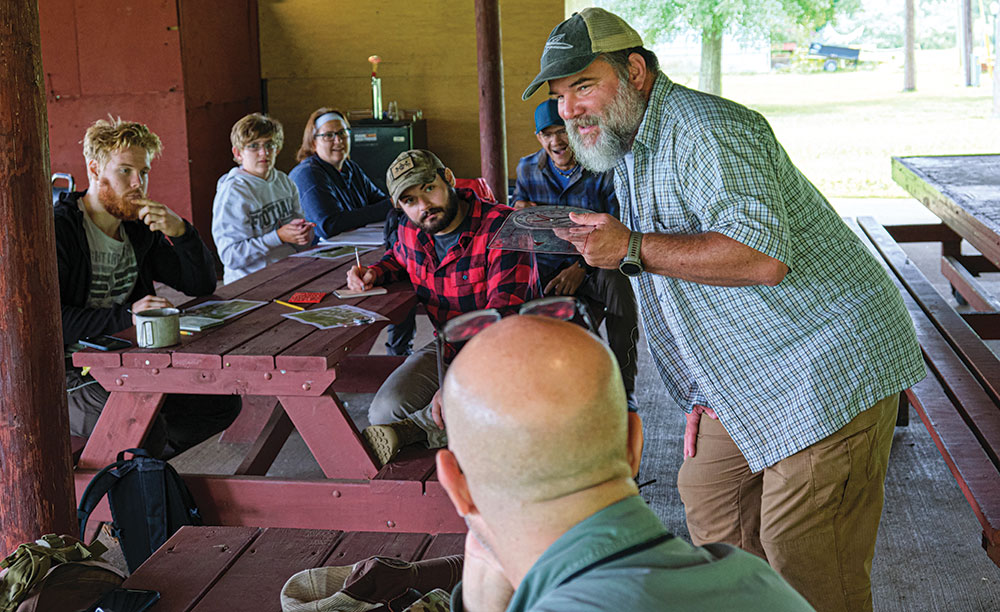
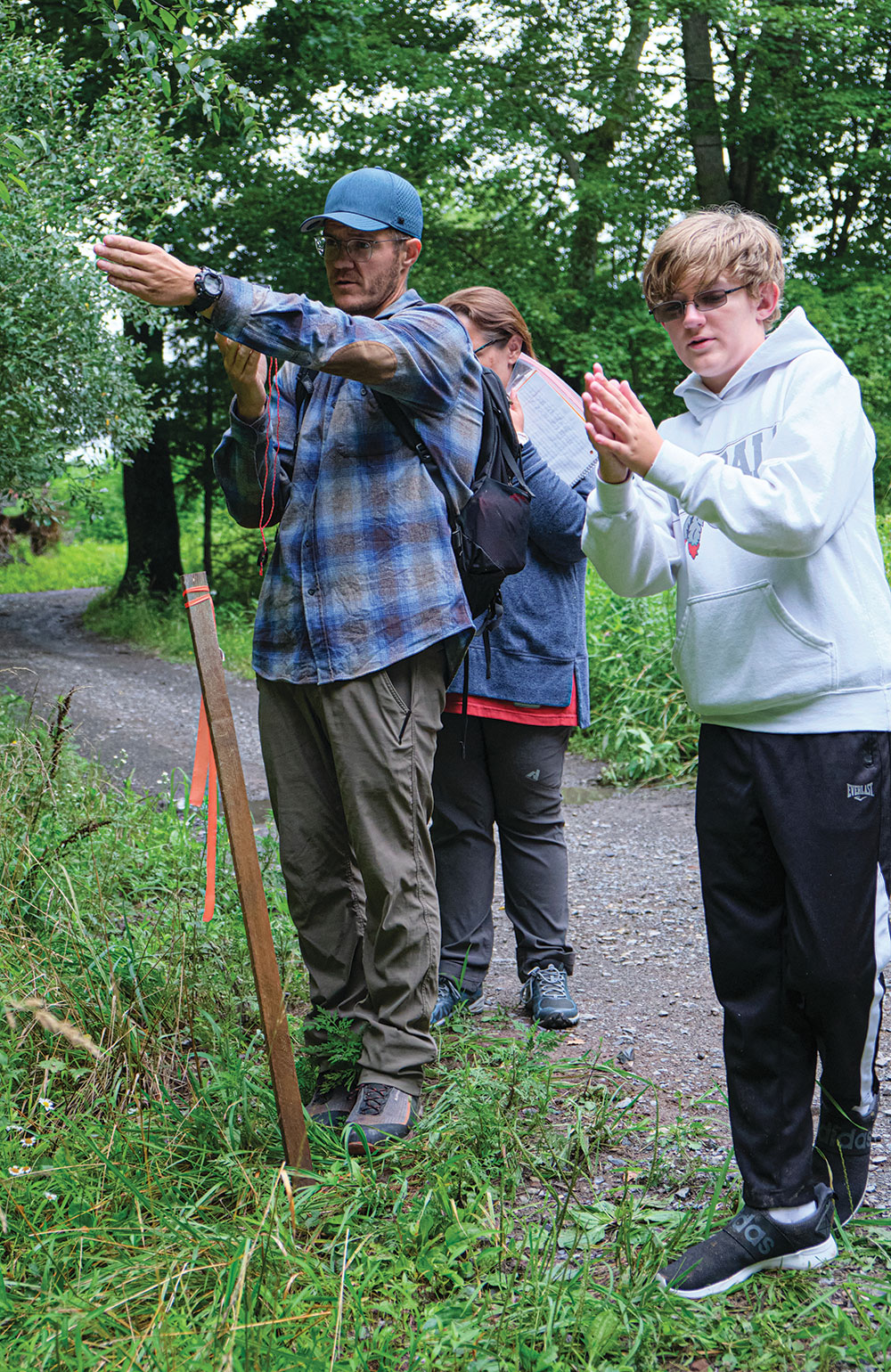
Nature Reliance School classes don’t provide a lot of downtime, and Caudill isn’t one to include unnecessary “fluff” in the curriculum.
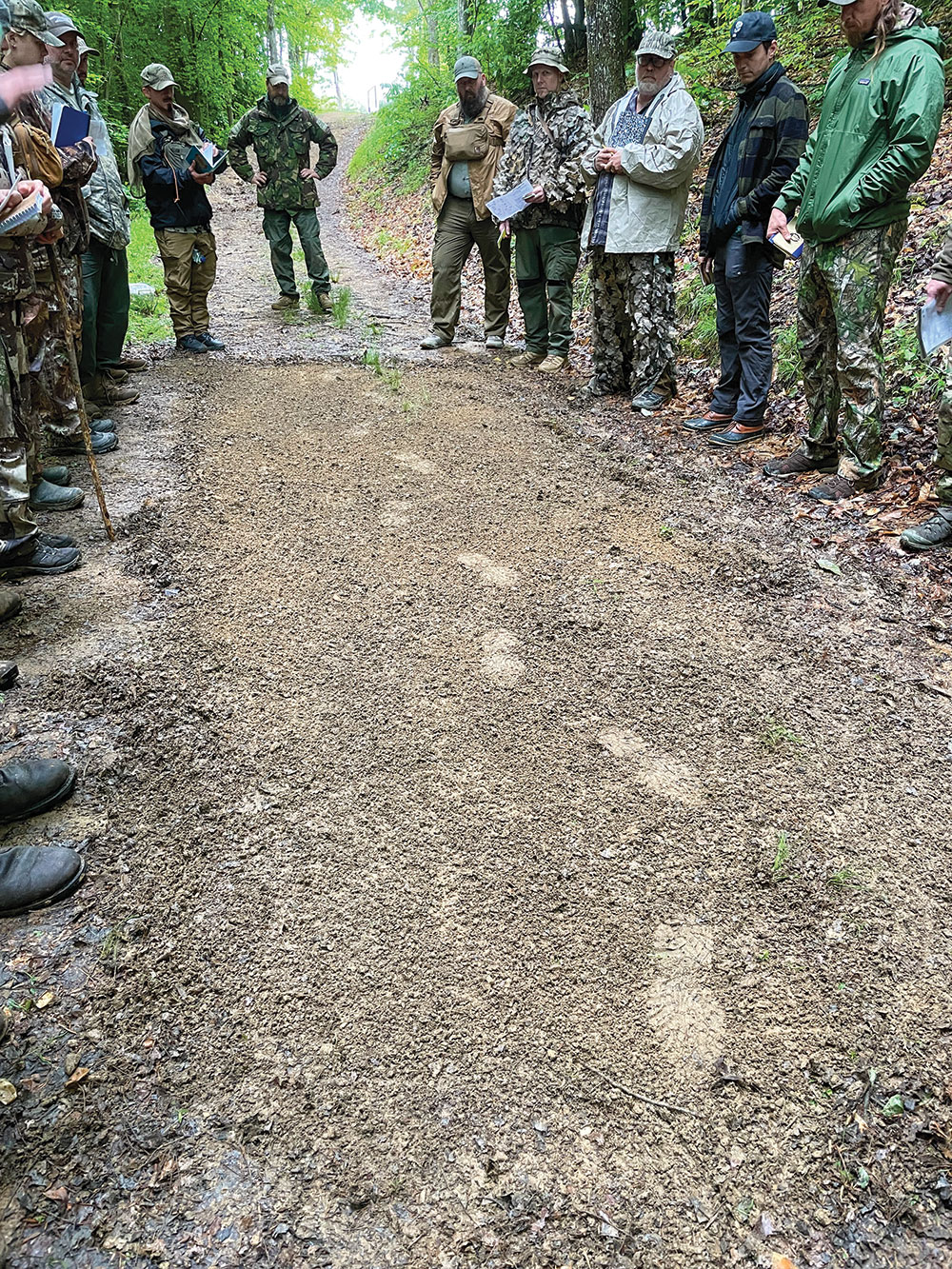
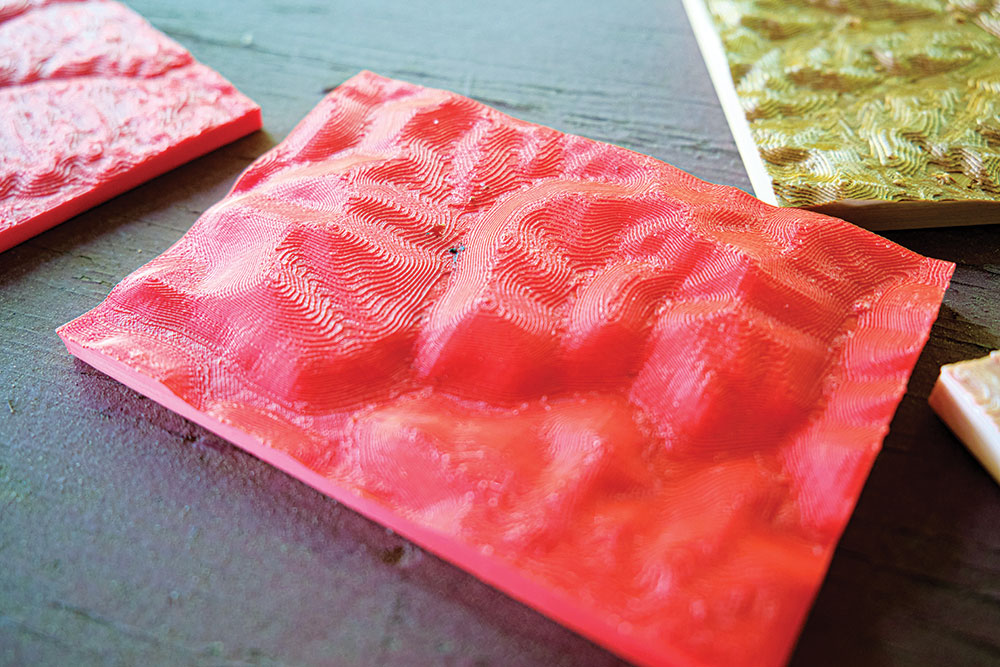
The classes contain a lot of information. That said, all of Caudill’s level 1 classes are designed to allow students the luxury of learning in a relaxed, comfortable environment. He’s one of the most competent outdoorsmen I’ve ever known, and his education and teaching abilities really shine through in his ability to reach students with diverse learning styles and experience levels.
“I read many books and articles and typically came away just as confused as when I started. Latitude, declination, degrees, bearings; it always made my head spin.”
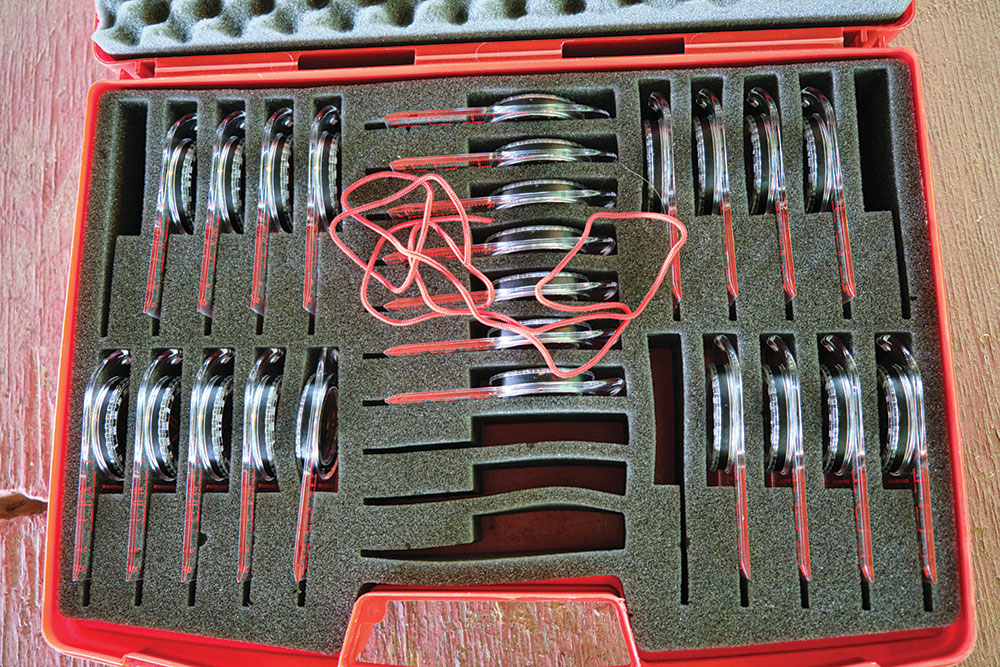
As I write this, I’m preparing for the “Scout/Tracker 2” class. Whereas Caudill’s level 1 classes are comfortable and relaxed, his level 2 classes are anything but. Students are on their own to apply the lessons learned at level 1 in a supervised and highly dynamic environment.
“Maps are the key to successful land navigation. A quality map and the ability to read it comprise the most important tools/skill set combination you can possess.”
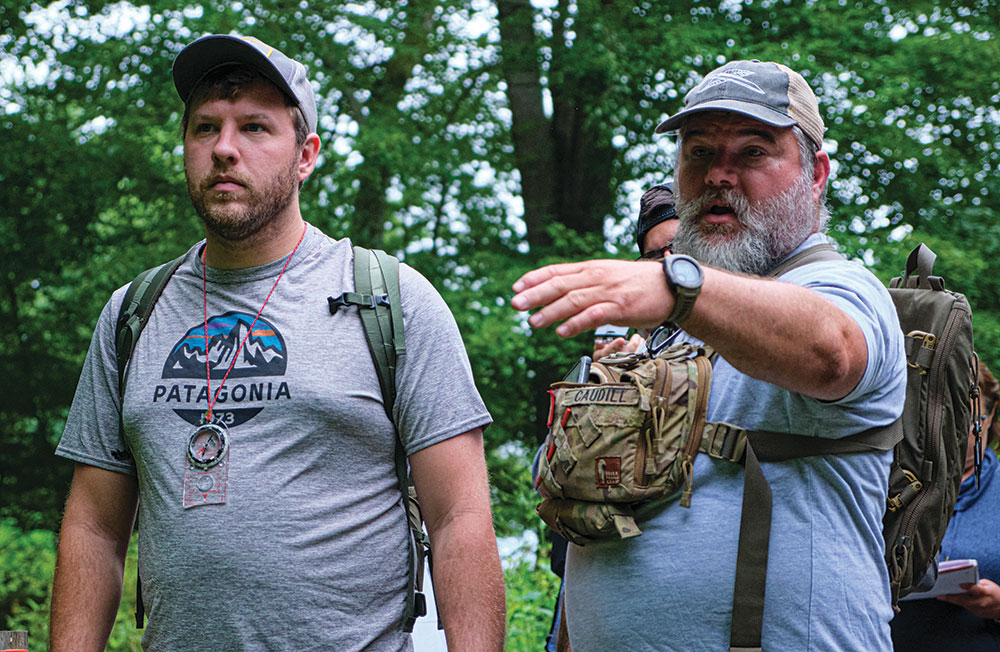
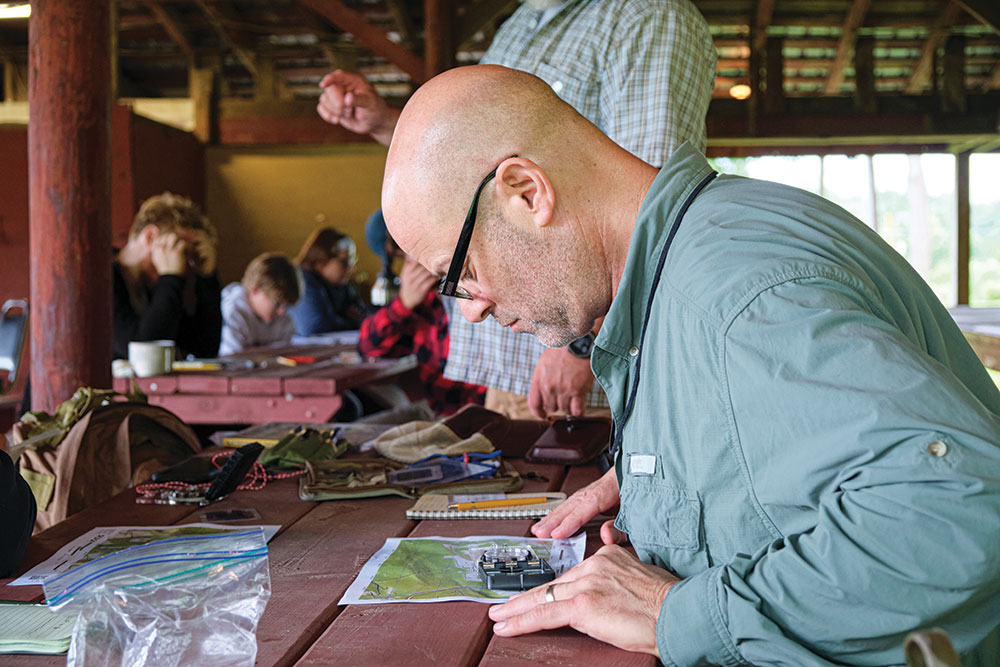
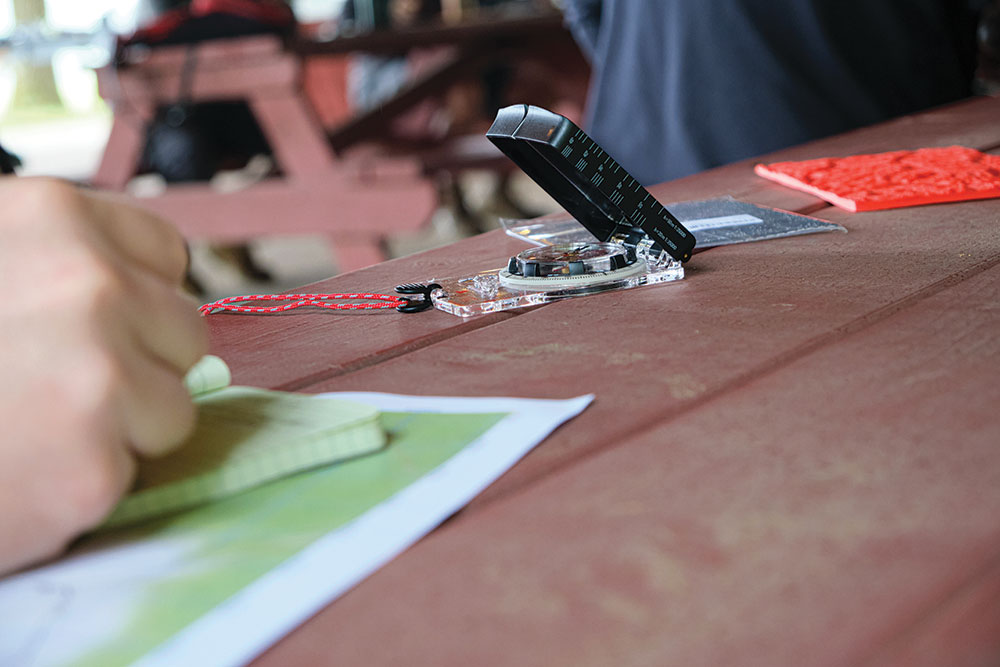
To sum this up, I’ll leave you with a quote from the email sent to all “Scout/Tracker 2” students: “In Level 2, it is time to get real with your training, not play pretend with it anymore. This is that time, this is that type of class.”
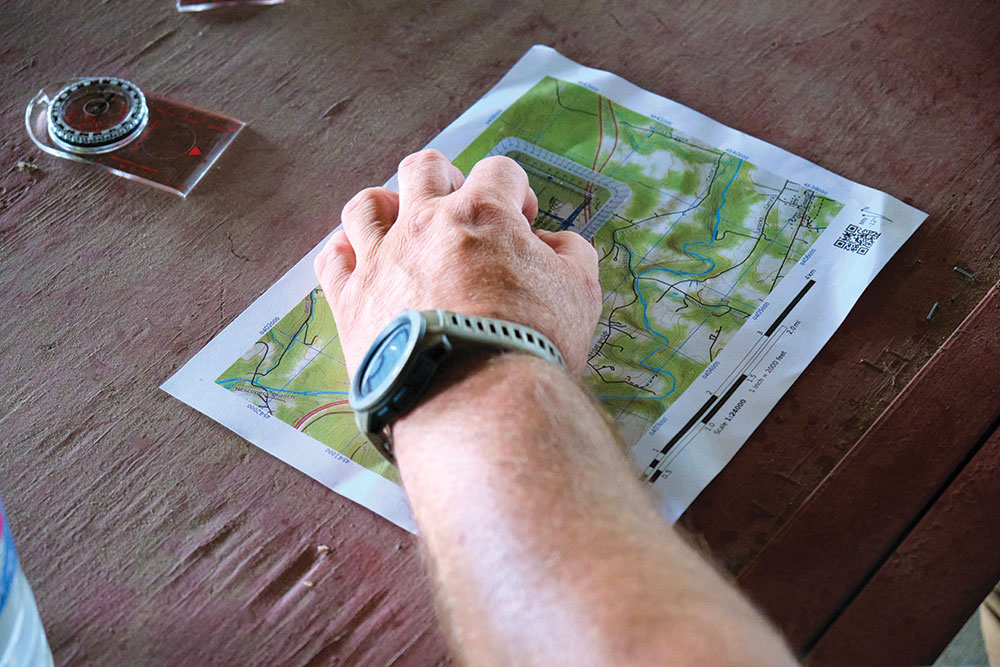
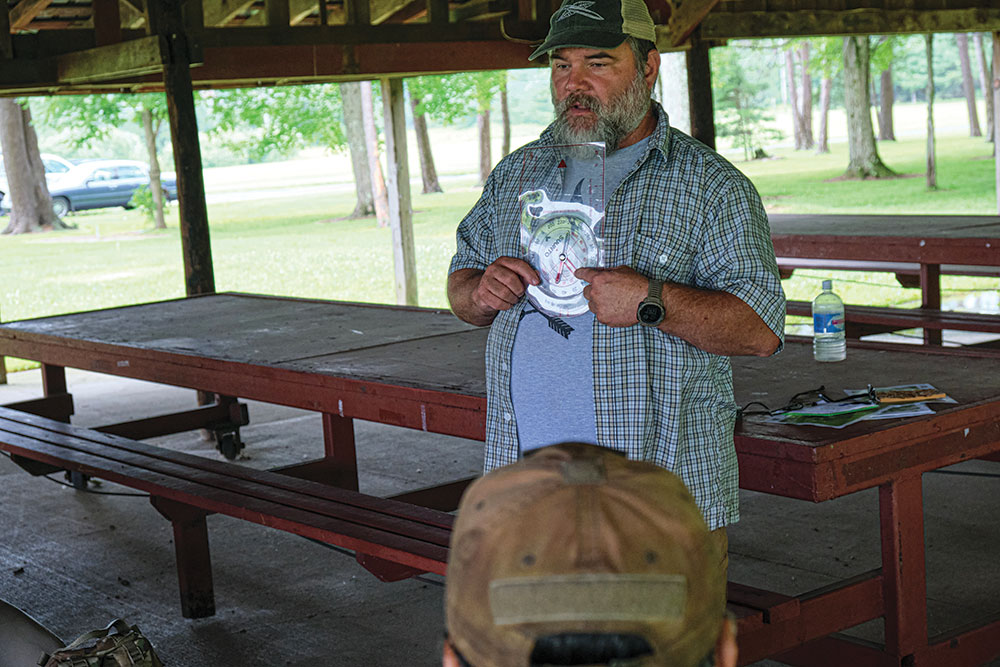
Frankly, I can’t wait!
Whether you’re a highly accomplished woodsman, or your level of experience ends with mere curiosity about a topic, the Nature Reliance School has something to offer you. You won’t regret it.
MEET THE FACE OF THE NATURE RELIANCE SCHOOL
At first glance, the owner of the Nature Reliance School, Craig Caudill, might seem like a simple country boy from the backwaters of Kentucky. In reality, he’s much, much more.
Caudill holds a B.A. in Statistical Analysis from the University of Kentucky. He’s an FBI Infraguard partner and instructor, a master naturalist from the University of Kentucky, a black belt in judo and a practitioner of aikido and krav maga.
Caudill’s received more than 420 hours of advanced tracking instruction from a variety of different schools and several hundred hours of defensive firearms instruction with handguns, rifles and shotguns. He’s taught man-tracking and survival to the FBI, DEA, National Guard, Navy SEALS, countless local SWAT teams, search-and-rescue teams and thousands of law enforcement officers and civilians around the country.
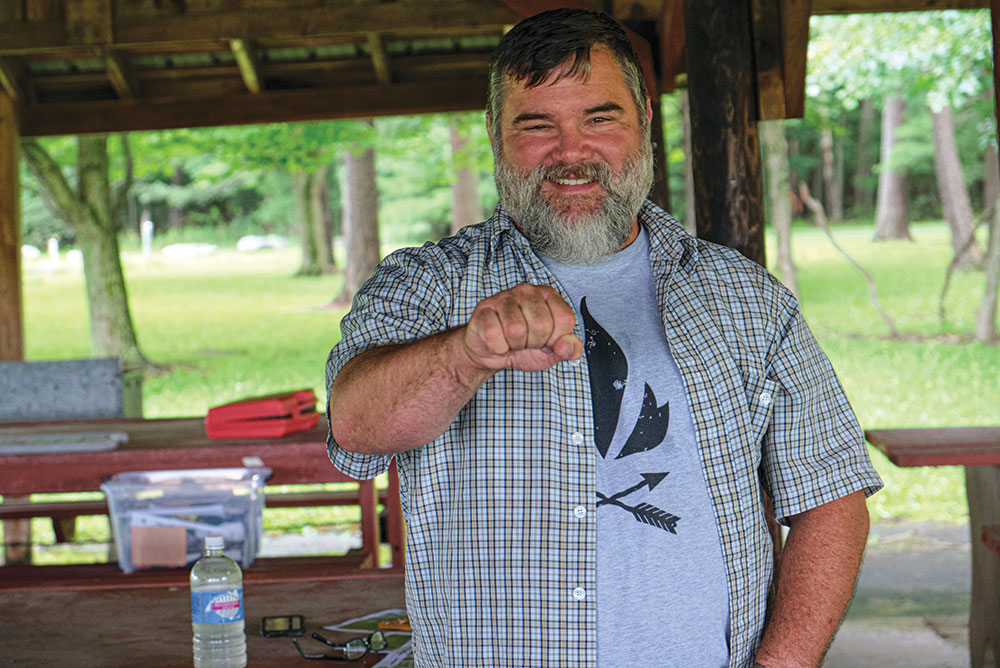
Caudill has also published three books: Ultimate Wilderness Survival, Ultimate Wilderness Gear and Essential Wilderness Navigation, which he co-authored with his good friend, Tracy Trimbal.
The Nature Reliance School offers classes in tracking, navigation, survival, bushcraft, primitive skills, medicinal and edible plants, and much more. Classes are offered through both in-person and online formats throughout the year and in all seasons.
Recently, Caudill has released a comprehensive online training program called “Vital Survival.” Through the use of a series of videos supported by online and printed documents and manuals, this course is designed to teach people how to survive almost any disaster. This is a “living” course, and anyone who purchases it will receive free updates and additional material for life.
If you want to become more prepared for whatever life has to offer, I can’t recommend the Nature Reliance School highly enough. Its material is relevant and well presented, and class costs are extremely reasonable.
Check it out; you won’t be disappointed. (NatureReliance.org)
ESSENTIAL WILDERNESS NAVIGATION — A WORTHWHILE READ
Craig Caudill’s book, Essential Wilderness Navigation, is broken down into 11 chapters that de al with essential skills, next-level skills and special ized practical applications.
Section 1 includes chapters on how to choose and read maps, finding a good compass, learning how it works and how to use it, use of technology (such as GPS systems), use of other associated gear and overall navigation troubleshooting.
Section 2 delves into the realm of natural navigation using the sun, stars, flora and fauna and details the basic math skills needed to take advantage of techniques such as triangulation.
Section 3 discusses wilderness navigation techniques for search-and-rescue, hunting, law enforcement, Boy Scouts and family learning. What sets Essential Wilderness Navigation apart from other books in the genre is how it’s laid out and broken down.
First, the book comes with a USGS (U.S. Geological Survey) topographical map from Caudill and Trimbal’s home state of Kentucky. This map is referenced repeatedly throughout the book for information and practical exercises.
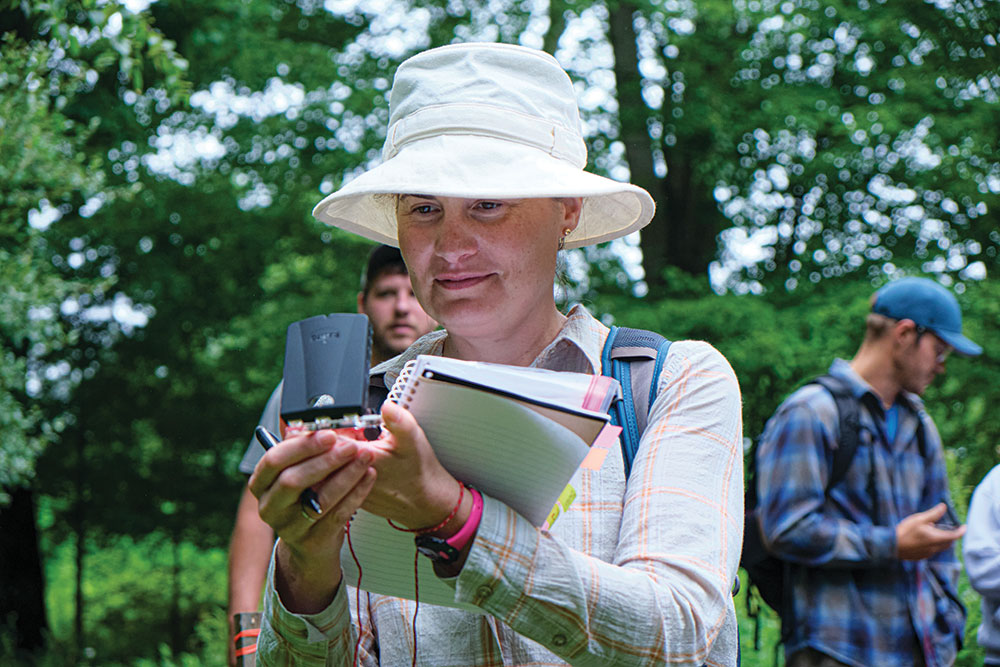
Next, each chapter is written in a clear, concise manner that’s easy to understand because of the use of specific, well-illustrated examples. The chapters conclude with a short knowledge quiz and a practice guide to help reinforce the information via practical exercises.
The utility of having a physical map to reference throughout the book can’t be emphasized enough: It’s extremely helpful.
NATURE RELIANCE SCHOOL COURSES
The motto of the Nature Reliance School is, “Come on, join in, let’s learn together.”
This deceptively simplistic statement runs through the core of every class Craig Caudill teaches. His passion is to engage with as many people as possible and share as much knowledge as he can to help them be better prepared to deal with emergencies and improve their overall quality of life. Another core principle of the Nature Reliance School is “Mindset, Skills, Tactics and Gear.”
Mindset: This is probably the single most-important aspect of survival, safety and self-reliance. Every Nature Reliance School class seeks to develop and nurture the mental attitudes needed to persevere in any situation.
Skills: Second to having the proper mindset, skills are simply the “nuts and bolts” of whatever discipline is being taught.
Tactics: “Tactics” refers to the ability to take the skills learned and apply them to a multitude of different situations and circumstances. Tactics also deal with the methods needed to continue to learn and grow your skills on your own.
Gear: Everyone loves gear, and Caudill is no exception. Every Nature Reliance School class includes a discussion about which gear works and doesn’t work and how to go about selecting the equipment that’s best-suited to the subject being taught.
The Nature Reliance School offers classes in survival, tracking, bushcraft, situational awareness, medicinal and edible plants, land navigation and much more. Caudill teaches in-person classes in his home state of Kentucky, as well as at various locations throughout the country.
In addition, as a result of the challenges COVID-19 imposed on all of us, Caudill has created a large catalog of online learning resources for those who can’t travel. These classes are extremely affordable and Internet accessible.
As I write this, Caudill has just released an online master class in disaster preparedness called “Vital Survival.” This class is the culmination of years of work and prepares individuals and families to survive virtually any crisis. The course is expertly arranged, exhaustively detailed and includes multiple written manuals, online resources, videos and much more. I’ve started to work my way through the material and can say without hesitation that this is the best course of its kind around and well worth many times its asking price.
SOURCE
Nature Reliance School
P.O. Box 99
NatureReliance.org
A version of this article first appeared in the January 2022 issue of American Outdoor Guide Boundless.

